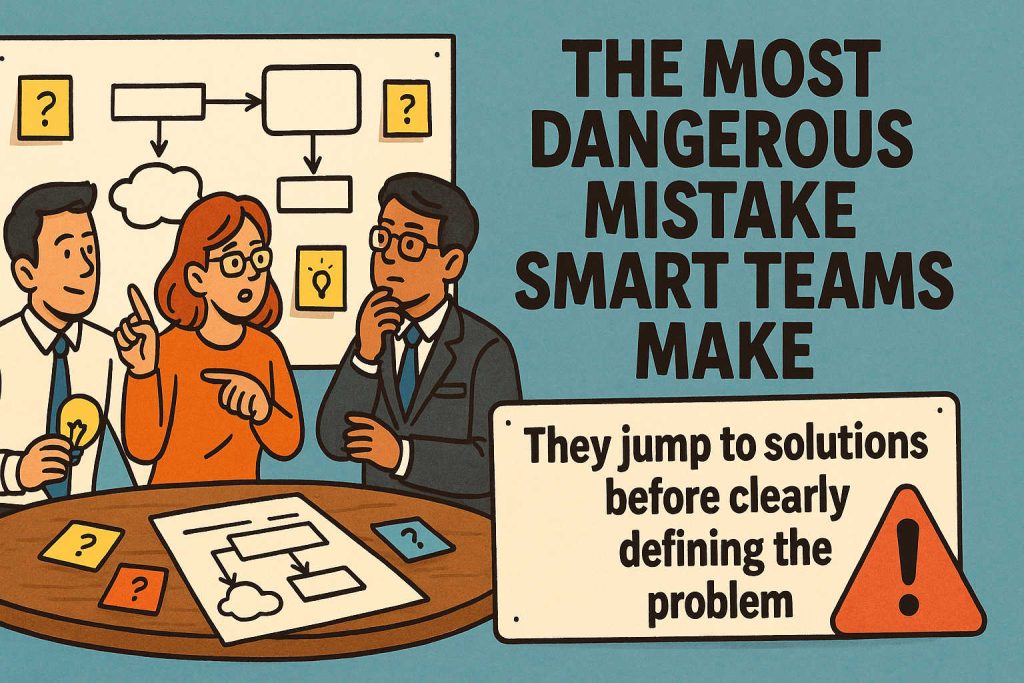
And how to fix it with one powerful shift in thinking
Every week, smart people gather in meetings to solve problems. They brainstorm, whiteboard, implement—and then? The results don’t change.
It’s not because the team wasn’t talented. It’s not because the solution was flawed. It’s because they were solving the wrong problem.
This is the most dangerous mistake high-performing teams make:
They jump to solutions before clearly defining the problem.
And the more capable the team, the faster they move—which means they run headfirst into the wrong direction, even faster.
Solving the Wrong Problem Looks Like:
– Rebuilding a system when the real issue is unclear expectations
– Spending thousands on marketing when the message isn’t clear
– Adding more tools when what’s needed is fewer, better processes
– Pushing harder when what’s really broken is alignment
You don’t need more hustle. You need clarity.
The Real Work Is Defining the Problem
Here’s what I teach executives and consulting clients:
A problem well-defined is halfway solved.
When I step into a company, I never offer a solution first. I ask:
– What is the real problem?
– What’s the evidence for that?
– Can you define it in one sentence?
More often than not, the answers are vague: ‘It’s not working.’ ‘We’re stuck.’ ‘We just need something better.’ These aren’t problems. They’re signals that a problem exists. But they don’t give you a direction.
A Simple 4-Part Framework to Define Any Problem:
1. What’s happening now? → “Our clients are dropping off during onboarding.”
2. What do we want instead? → “We want them to complete onboarding in under 10 minutes.”
3. What’s stopping us? → “Our current system requires a manual approval step that causes delays.”
4. What happens if we don’t fix this? → “Churn continues, and referrals drop.”
Now you’ve got a real problem worth solving:
“Our onboarding system causes delays due to a manual step, which results in client drop-off. We need to streamline this process to reduce churn.”
Clear. Actionable. Aligned.
Start Here in Your Next Meeting:
Before your team discusses what to do, start with this question:
“What problem are we really trying to solve here?”
Then follow up with:
– What’s happening now?
– What do we want instead?
– What’s getting in the way?
– What happens if we ignore this?
You’ll be surprised how often the original assumption was wrong—and how quickly the solution becomes obvious once the problem is clear.

Leave a Reply